|
Some of us plan and seek experiences, especially when travelling. On occasion, though, something new appears, and it is hard to not say, “sure, why not?” Thus was the case of discovering our favorite bottom-shelf Czech beer. It was an unexpectedly scorching early fall day in Prague. We had spent the previous five hours wandering the city in search of the elusive, vegetarian doctors’ sausage (post to come) and loaves of freshly boiled Knedlíky for our dinner (yes, another easter egg…). Needless to say, It was hot, we were out of water, and we were looking forward to cooling off in our hotel room for a few hours before exploring Old City Prague’s famous absinthe bars. As we approached the building, we were confronted with a minefield of Central European construction equipment. Not a good sign. Crowed around a large hole in the sidewalk were a half dozen, shirtless men in bright yellow vests that seemed strategically parted to display their Slavic pectoral muscles to the beautiful Slavic women. We tried not to judge them too harshly, and they were working hard, but this had been a quiet, pec-less location when we left, and we were on the borderline of cranky. Upon entry to the building, we noted hastily scribbled signs on computer paper that read “no water, water line break” in Czech, English, and German. This wasn’t good, either. Refreshing showers and refills of our water bottles were apparently not in our near future. We shared a knowing yet furtive glance indicating that this might not be our most relaxing of evenings as we passed the reception desk and hit the stairs. About a third of the way down the hallway toward our AC-less room, a table partially blocked our path. The table was filled, in a ramshackeled, but nonetheless compelling fashion, with aluminum cans displaying pictures of a cute goat (Kozel) and one loan water bottle. A checky note perched atop stated, “Save Water and Drink Beer”. This not only brightened our mood, but gave us a visual window into this strange Czech culture. Not to get too nerdy, but according to the World Beer Index the Czechs drink the most beer of any country in the world. 2021 records show that each Czech drinks, on average, 184 liters of beer per year. That is about 48 U.S. gallons (!!!) or enough beer to almost fill a standard wine barrel (i.e., 60 gallons). This isn’t just because beer is on average cheaper than water - to be fair, non-touristy sites serve very good beer for around 1 USD. Rather, beer production, and, by extension, drinking, has been a popular activity of Bohemia for almost 2000 years. Modern historians mostly agree that beer making in Bohemia dates to at least the 1st century C.E., if not earlier. It likely predates Slavic tribe migration. Archeological records suggest hops have been grown and traded in the region since 900 C.E. and were possibly cultivated by early Celtic tribes. Hops were of such great value during this period that (the Good) King Wenceslas had anyone caught exporting plant cuttings put to death. If you try the beer this seems somewhat less of an unreasonable punishment... During the Middle Ages beer was brewed in towns by a licensed council member or at monasteries by specially appointed clergy. Common lore suggests that beer was more popular than water at this time (duh), but there is good literature evidence to suggest that water was still a primary beverage of choice for the poor and/or the hyper religious. This is because water was free, and most spring-well sources had low to no biological pollution. Beer was expensive (as licensed commodities are) and predominately consumed by laborers and the upper echelons of society due to its high nutritional content. There are several examples of Bohemian laborers being paid their daily wages in beer rations at their local brewery. One wonders if they noticed that raises led to decreased productivity in their workers. The idea that beer was a safe drink during the Middle Ages has some merit though. Correctly prepared beer contains low amounts of bad bacteria. It is also moderately rich in carbohydrates, fat, protein, fiber, vitamins, and minerals, contains electrolytes, and boasts other “medicinal” attributes. This is not a crazy idea, as barley is now known to contain antioxidants that may boost the immune system and may reduce the risk of contracting viral infections like colds and flus. Other constituents of the frothy beverage have been identified to lower levels of inflammation. Beer was thus considered a “health food” at the time. It was sort of like Medieval spirulina. These benefits made the brewing of beer in Bohemia a lucrative endeavor until at least The Thirty Years’ War in the early 1600’s. This population and architecturally devastating timeframe decimated the Bohemian beer industry, turning beer into a pricy commodity. Beer became so highly valued at this time that it is rumored (not yet confirmed) to be used as a method of payment to Swedish forces to prevent the invasion and destruction of Kutná Hora; a storybook town that is home to Sedlec Abbey and its astounding Ossuary chapel. Flash forwards several centuries, and in the 1900’s the price of beer again dropped due to Communist-state production takeovers and subsequent state-enforced price fixing. The low, low prices made beer drinking a popular and legal recreation among Czech men. However, this also resulted in low quality brews due to a lack of government reinvestment in local agriculture technology and brewing equipment. Although price controls ended after the Velvet Revolution in 1991, the famed České Budějovice brewery Budějovický Budvar (aka, the real Budweiser) is still controlled and operated by the Czech government. We can personally attest that the modern beer brewed at Budějovice is very good! Today, the price of Czech beer is still comparatively low, but the quality has much improved. This is in part due to the revitalization of traditional Czech brewing traditions that were almost lost during the times of Communism. Czech famed Pilsners can be found in any tap room along side many other styles. When purchasing beer, it is important to note that most are labeled with the “degree scale” that represents the strength of the draft, with strength being related to the post-fermentation weight percentage of sucrose. It is not ABV (as we were initially shocked to see so many people seemingly downing 10% horsepower beer). Generally, the lower the degree scale the lower the beer's alcoholic volume. Confusingly, this scale is often accompanied by the terms lehké (light, <8 degrees), ležák (lager, 11 to 12.99 degrees), and výčepní (draught 8 to 10 degrees)... and several others. History aside, Czech beers are best drunk near or just below room temperature as the heat helps bring out their many aromatic compounds. Oh, and foam is good… very, very good. Although the beer on the stairway table wasn’t as cold as it should have been, it was free and a welcomed distraction from the heat of that fall day in Prague. Since we knew we were on “the honor system”, we only took two each to our room. As this was our first taste of lower priced Czech beer, we weren’t sure what to expect, but imagined that it would be “ok”. However, we were very much surprised by their quality and balance. Buying equivalently good beer in the states would set us back at least $8 per pint. So, we made some careful mental notes for which beers we wanted to try from a tap (i.e., both – duh) and also wanted to do a blind taste test of the other commercial brews. However, the one beer we tried that day stood horns and hooves above the others. This will be the topic of our next post.
0 Comments
Italy has so much history that the natives probably get bored with it. I can’t tell you how many times we’ve been trying to find important historical sites only to get lost. The problem is that, at best, there may be a little sign in Italy telling you that X is down this particular road or to “turn here for…” We’re not used to that. The American tradition of putting up great neon signs every 20 feet or so to advertise a site, while a bit gauche, is very useful for us dumb tourists. Sadly, in Italy you could literally be driving past the location of an event that shook world history and not even know it. If you get distracted by one cute squirrel you might completely miss that little sign and never be any the wiser. This could easily have been the case for one of the most important battle sites of Ancient Rome: Hannibal’s Battle of Trebia. No, not the Hannibal who fancies chianti and fava beans with a heaping plate of cannibalism (though he’s interesting too), but Hannibal Barca, genius battle strategist and scourge of ancient Rome. You might remember him from history class. He’s that general from Carthage (i.e., modern-day Tunisia in North Africa) who marched an army of 30,000 men – including 15,000 horses, lots of donkeys, and 37 war elephants (!!) – over the alps. Who does that? Either a genius or madman. Hannibal was no dumb-dumb, though, and he was very motivated to take the Roman Empire down a peg or two. After descending from the alps with his poor pachyderms and meandering around Italy for a while, wily old Hannibal knew he had to humiliate the Romans in a grander fashion than the little skirmishes he’d been having with the legions. So, on a chilly day in December of 218 BC, his army camped outside of a flat plane with the Trebia river situated between his own and the Roman armies. The plane was so flat it offered little risk of an ambush (keep this in mind). He roused his troops very early in the morning. Like a good general, he made sure they had a nice, warm breakfast. This probably included something like oatmeal or barley porridge with some hard cheese thrown in for extra protein. He probably also had them rub their bodies down with hot olive oil, not just for warmth, but to make it a lot harder to wrestle them to the ground. He knew they were going to have a long day. Hannibal then sent his dangerous (and a bit chaotic) Numidian cavalry across the river to pick a fight with the Romans. Though very early in the morning, with many soldiers still asleep, the Romans were more than happy to play along. Sempronius, head of the legions, ordered his entire army to take Hannibal down. Unfortunately for the Romans, in order to do so, they had to wade across the frigid waters of the Trebia. To paraphrase a great line from Animal House, “cold, tired, and hungry is no way to go into battle, son”. But go they did, and engaged the upstart General. As the Romans slammed into the Carthaginian line, they pushed forward toward the center. They tended to shy away from Hannibal’s wings, as they were understandably nervous to face down the angry elephants and cavalry that Hannibal had cleverly positioned there. Though the Romans outnumbered the Carthaginians, Hannibal was no fool. He knew they would focus on the center, hoping to break his line. So, he planned to have the left and right wings of his army slowly start to encircle the legions. And encircle they did. Next, he gave Sempronius a surprise bigger than any M. Night Shyamalan movie or ending of a Scooby Doo episode. The Romans were about to get ambushed. Though the battle took place on a flat plane, Hannibal had secretly sent his brother Mago, 1000 cavalry, and 1000 infantry to hide in some marshland to the left of the river the night before. Then, at the perfect moment, Mago’s men sprang into action, attacking the rear of Sempronius’s line. The encirclement of the Romans was now complete, and this was very bad for the Italians. Some Romans were able to break through the Carthaginian center and escape. They were the lucky ones, and very few were lucky that day. The rest of the army was surrounded, with death coming from all sides. What a bloodbath this must have been. Imagine those poor Roman soldiers, bunched up like teenage girls at a Taylor Swift concert, unable to swing their swords or throw their javelins because there wasn’t enough room. Imagine what it must have been like to hear the death cries of their countrymen, knowing they their own screams would soon join this macabre chorus. Blood, sweat, and viscera were the only things they could smell as they waited for their own demise to come, shivering from cold and fear, and not even having the small comfort of a full belly. This is truly the stuff of nightmares. Historians estimate that approximately 20,000 (!!) Romans died that day alone, with the Carthaginians losing several thousand men. These casualties could easily fill up a good-sized college football stadium. And keep in mind that these men were not killed by grenades, drone strikes, or cluster bombs. These were deaths brought about by hacking, slicing, thrusting, and the occasional crush of an elephant’s foot. Most were not quick deaths. Driving to the battle site today, though, you would hardly know that any of this took place. Granted, there is a very impressive war elephant statue and, of course, a plaque describing this battle. Other than those, though, you just see concrete roads and nondescript scenery similar to any other stretch of northern Italian highway. It somehow seems a bit imbalanced given the massive scale of this event and all the men (and poor elephants) who died here. Maybe this judgment is coming from a selfish place. If one of us were ever decapitated by a short sword or gored to death by an elephant tusk in a massive battle, we’d like to think that there would at least be a tour guide, memorial garden, or even a tacky gift shop to mark the location where we shuffled off our mortal coils. But, alas, Italy has so many places like this, we can only guess that they have to choose their tourist sites wisely. Getting there. As noted, this is a bit difficult to find online. Search for “Monument to 2nd Punic War” or type this address into google maps: SP40, 29010 Gazzola PC, Italy There is some parking at the site. You might also spy some cute skinks running around the monument. Beware of the hornets, though. When we visited there were quite a few buzzing around. Side Trips: There is so much to see in the area. For instance, Parma – yes, the place where they make Parmigiano Reggiano cheese – is just about an hour and a half drive from the site of the battle. It’s a nice central location to do a food tour of Northern Italy in addition to some dark tourist trips If you decide to follow in Hannibal’s footsteps and cross the alps, make sure to try a fun local crunchy rye flatbread called Schüttelbrot. It’s sort of like Swedish Knäckebröd, but lightly spiced with fenugreek, caraway, cumin, and/or fennel. The fenugreek variety is most traditional and is a must try if you’re ever in the area. Though you can find it in local grocery stores, the best comes from local bakeries (of course). Also, make sure to taste of Italian Amari when you’re there. It will get you in the mood for post number two on our homemade walnut amaro. If you frequent the occasional cocktail bar, you already know that Amari (i.e., the plural of "Amaro") are all the rage these days. We even found Amaro Averna in a teeny tiny little liquor store in rural Maryland the other day. That seems to imply that it’s a growth industry. Have you ever had fantasies of making a homemade version of this hipster cocktail staple? Do you live in North America, the UK, or Europe? Do you know where there’s a walnut tree nearby? If you answered yes to all three of these questions, you should go to the tree (literally right now, the window for this is closing), grab a bunch of the little green, unripe walnuts, and follow the easy recipe below. We prefer black walnuts for making our version, but the regular English or French varieties will work too. All you need is basic caveman-level food prep skills and some patience, and in just two months you will have a complex, spicy amaro to impress all your friends and hand out as personalized presents over the next year. Let’s start with some basics, though, what is this strange elixir called amaro? In a nutshell, it’s a bittersweet liqueur with complex flavors and aromas, often enjoyed as a digestif after heavy meals. The most famous amari hail from the land of the pasta waistband tightener, Italy (of course), but France and many other European countries have their own versions. Though often enjoyed neat or chilled, it can be used to great effect in cocktails. Having literally just gone to the backyard and harvested three Black Walnut trees for their immature nuts, we are well on our way to making one of our favorites called Nocino (Italy) or Liqueur de Noix (France). As this is a multi-part post, we won’t go too far into the tasting notes, but suffice it to say that just a barspoon full of this homemade liqueur can elevate a Manhattan, Old Fashioned, or even standard black coffee to gourmand-level heights. It’s that good. Recipe
-20 green nuts from a Black Walnut tree (or 30 green English/French Walnuts) -2.5 cups sugar -1 liter cheap 80-horsepower vodka -2 sticks of good quality cinnamon -1 whole vanilla bean (don’t use extract – this receipt is worth splurging on the good stuff) Other spices and flavorings. David Lebovitz uses 10 cloves and the zest of one lemon. We’ve used his recipe many times and love it, but wanted to tweek it to our tastes https://www.davidlebovitz.com/liqueur-de-noix-green-walnut-liq/ We used: -1 ts grains of paradise -7 dried cubeb (an aromatic pepper from Java) berries Directions -Mix the sugar with the vodka, doing your best to make a nice solution. Don’t worry if some sugar is on the bottom. It will eventually incorporate. -Quarter the green walnuts with a sharp paring knife. We recommend using gloves as there is a pigment in the walnuts that will turn your skin temporarily black. Place them in the vodka. -Add in the remaining spices and vanilla bean -Shake to incorporate -Set in a cool, dark place and shake every day for two solid months. Yes, you need to be patient here and let the walnuts do their magic. There’s really something strange going on in all those ex-Viking countries (e.g., Norway, Sweden, Finland). In addition to having ridiculously tall and stoic people, they also tend to produce good, strange, and (sadly) very expensive liquor. Maybe it’s always been that way. It’s possible that the only way to get yourself through watching the famous “Blood Eagle” torture might be to drink something just a bit more bracing that the usual beer or mead. Regardless, for our money, some of the most unique Viking tipples hail from that slightly out-of-the-way country to the northeast of America, Iceland. We came upon this drink purely by chance. While flying Icelandair for the first time on our way home from the UK, we had some extra time to visit Duty Free at Keflavík International Airport in the capital of Reykjavík. Quickly grabbing up two bottles of Brennivín (i.e., “the black death” – we’ll cover this in a future post), our keen eyes spied an amber bottle with what looked like a chunk of moss floating inside. Though it didn’t exactly look appealing, it was unique, and that was good enough for us. So, we grabbed a bottle of that, too, and raced to our gate before we missed the connecting flight. This was a very good decision. When we finally got around to opening this strange bottle labeled as Fjallagrasa Icelandic Schnapps, we were very surprised. To be honest, we had never considered what alcoholic moss would taste like, but we never imagined that it would taste as good as this (see notes below). Though this may sound strange, it tasted, dare we say, “healthy”. After some quick googling, we learned that this moss has been used in Iceland for centuries as a means to ward off coughs and colds and, interestingly, might even have immunostimulant properties. On the other hand, this could all just be a great rationalization to drink more Schnapps. We’re fine either way. To make this strange Schnapps, special Viking lichen is harvested by hand from the interior of the country, mainly at higher elevations. We can only imagine that horned helmets are de rigeur and that proper sacrifices must be made to Freya and Loki before pulling out any of these choice plants. The liquor-loving mosses are then left to sit in neutral spirits until the flavors are extracted and it morphs into the soft amber liqueur you see in the pics. So back to the cost of drinking in ex-Viking lands… Sadly, getting a bit buzzed in Iceland will set you back some cash. An average beer costs $10-12 with cocktails ranging upwards of $20. This unfortunate fact may put a limit on your personal degeneracy when visiting Iceland’s capital. Necessity, they say, is the mother of invention, though, and there are cheaper options. Our best piece of advice is NOT to rush from the airport, but to spend a good bit of time in the Duty Free store before you leave. You’ll be able to load up on beer, liqueur, wine, and even food at far cheaper prices than anywhere in the Reykjavík region, even at grocery and liquor stores. Then, just have a drink or three before you hit the town and be patient as you nurse those overpriced Icelandic beers while waiting for your $35 vegetarian burger. Please don't let the cost deter you. Iceland is a very cool place with fascinating people, so it is well worth it. Flavor Notes: Fjallagrasa Icelandic Schnapps is a tough drink to describe. The only thing we’ve ever tried that even comes close to this flavor profile would be an Italian liqueur named Zirmol which is made from pinecones. However, Zirmol is more “piney” (obviously) and has hints of menthol that you don’t find in our Icelandic Schnapps. We would describe the Icelandic stuff as soft, a bit earthy and woody, with an almost butterscotch flavor at the end. You may taste white pepper and citrus as well. Unfortunately, all these subtle flavors can easily be overpowered, so care must be taken when using it in cocktails or you’ll miss the moss. At 38% horsepower, it’s certainly not weak, but the flavor makes it feel softer and less powerful than it is. A new cocktail for summer cold season: The Moss Toddy
-2 oz Moss Schnapps -1 oz water -1/2 oz lime juice -1/2 oz Velvet Falernum (we use John D. Taylor's brand) -Shake with ice and strain into rocks glass -Enjoy your subtle and complex drink as that pesky summer cough gently fades into the Northern Lights |
Categories
All
Archives
March 2025
|







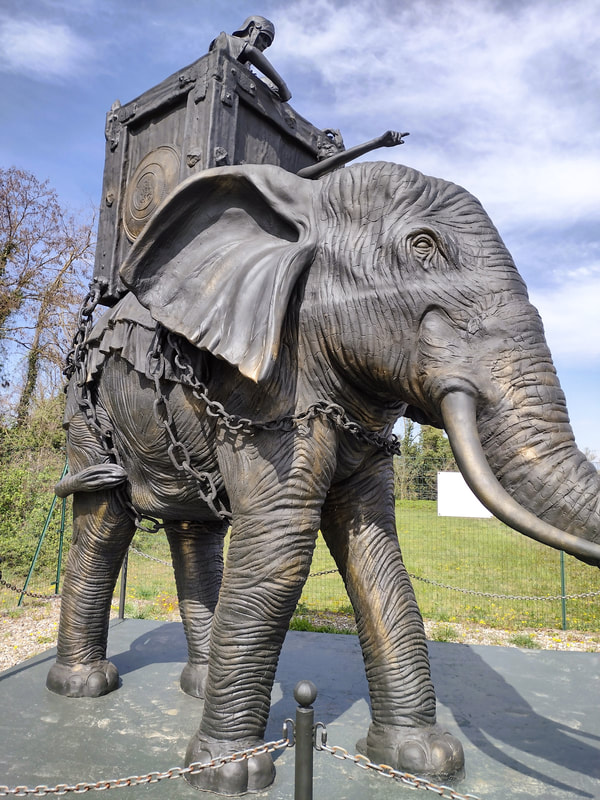
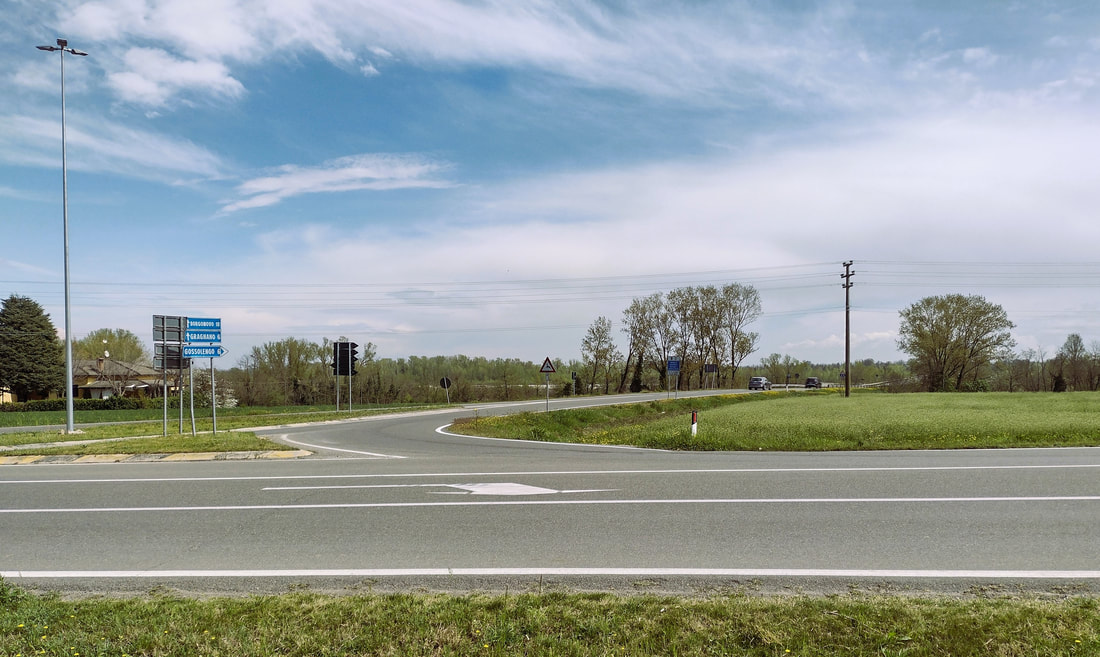



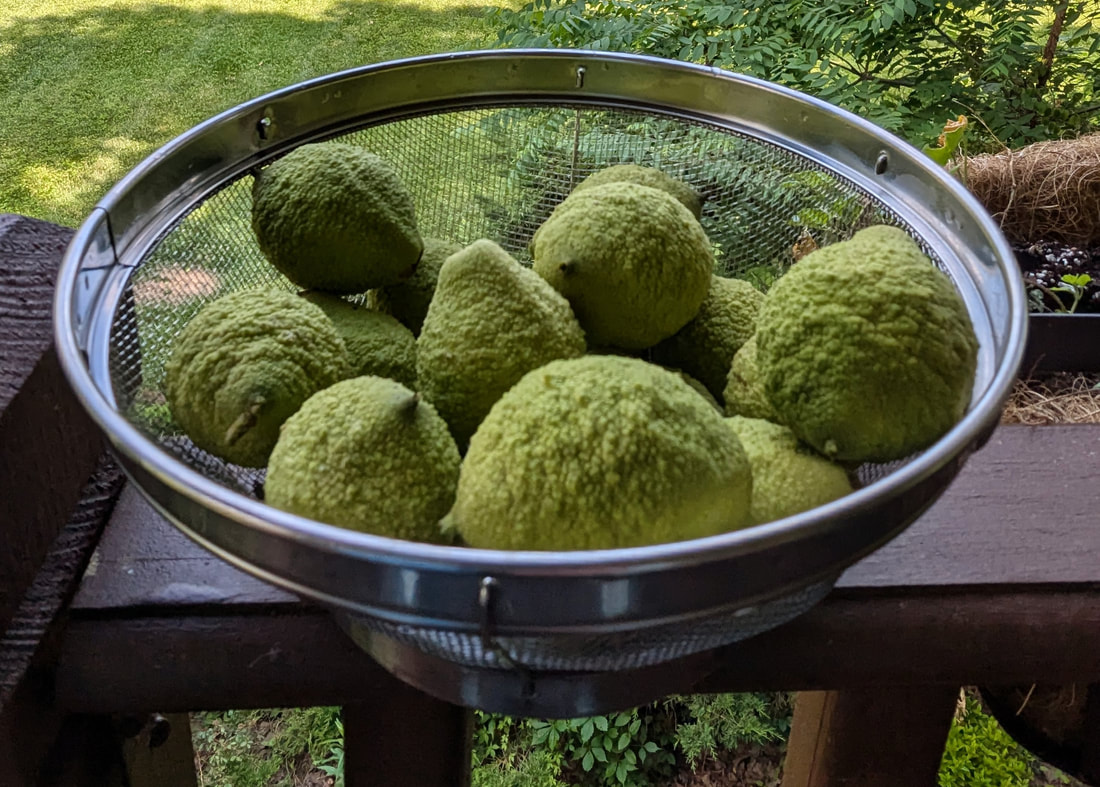

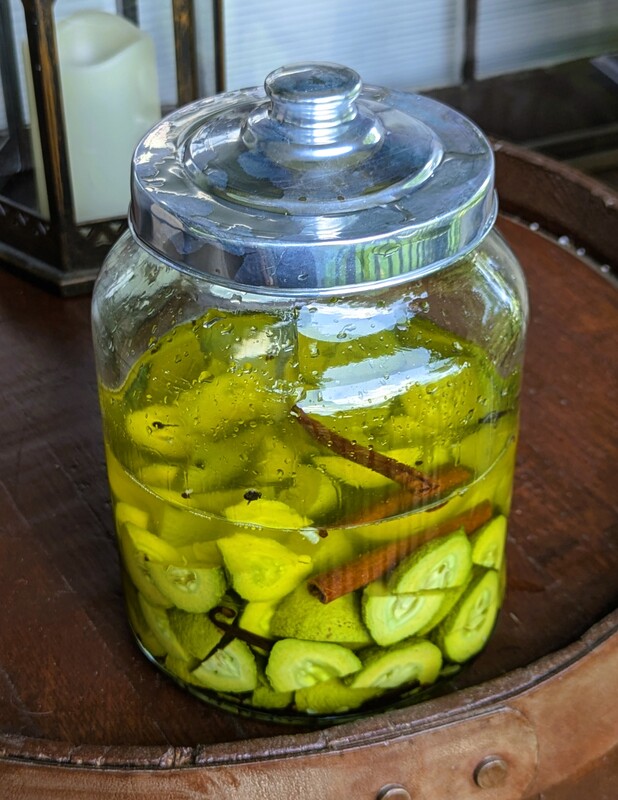
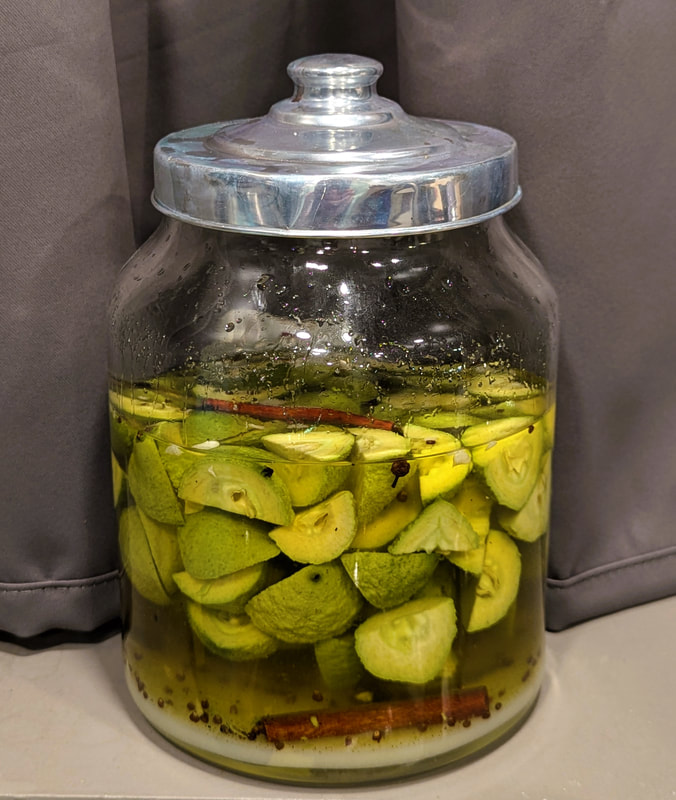


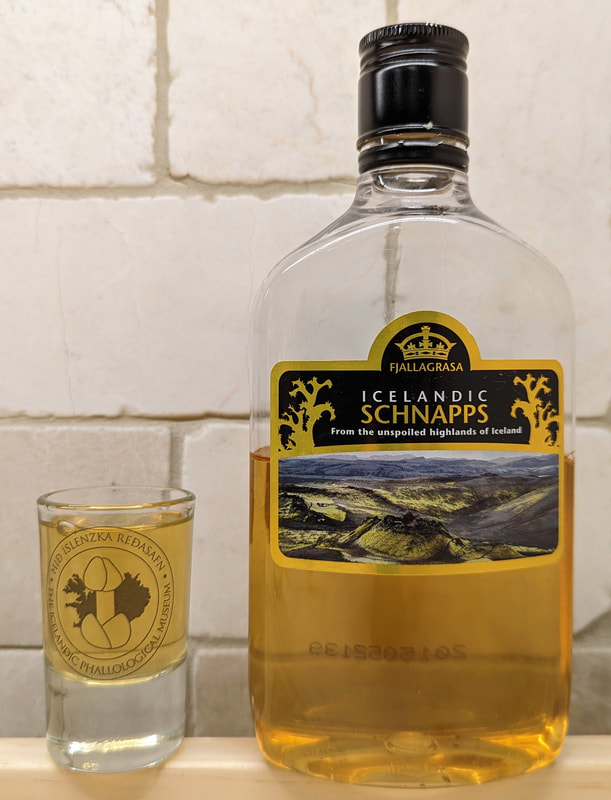
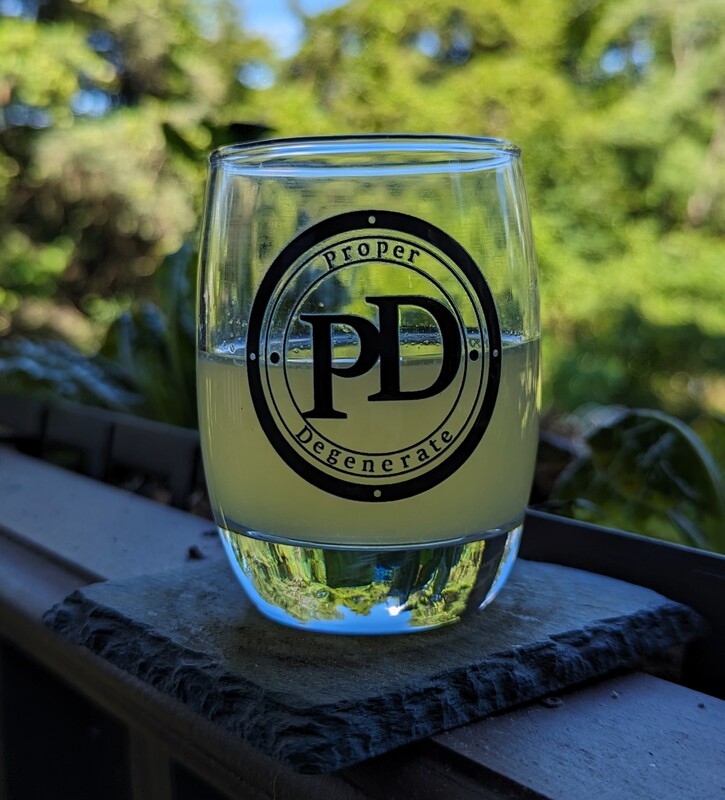
 RSS Feed
RSS Feed